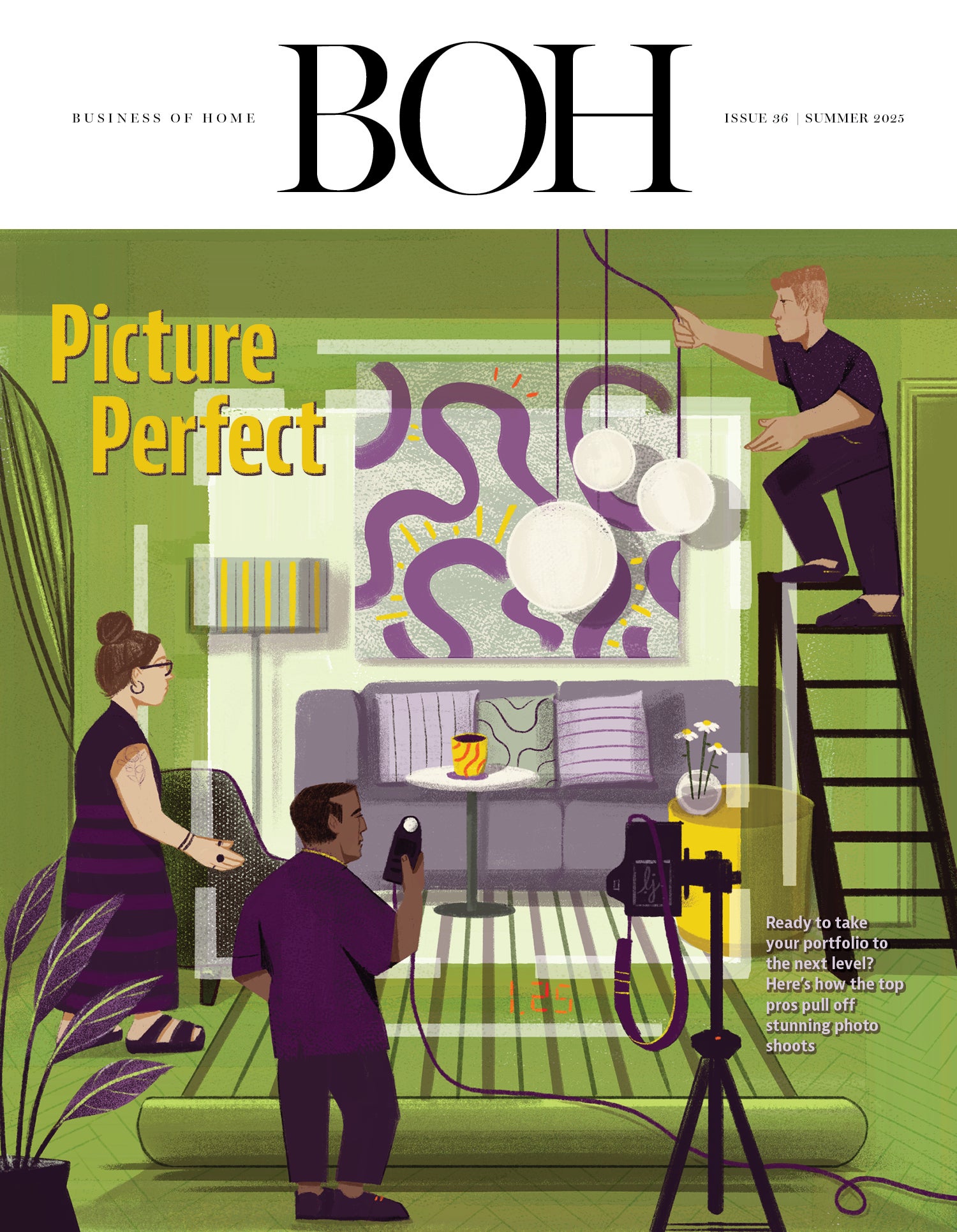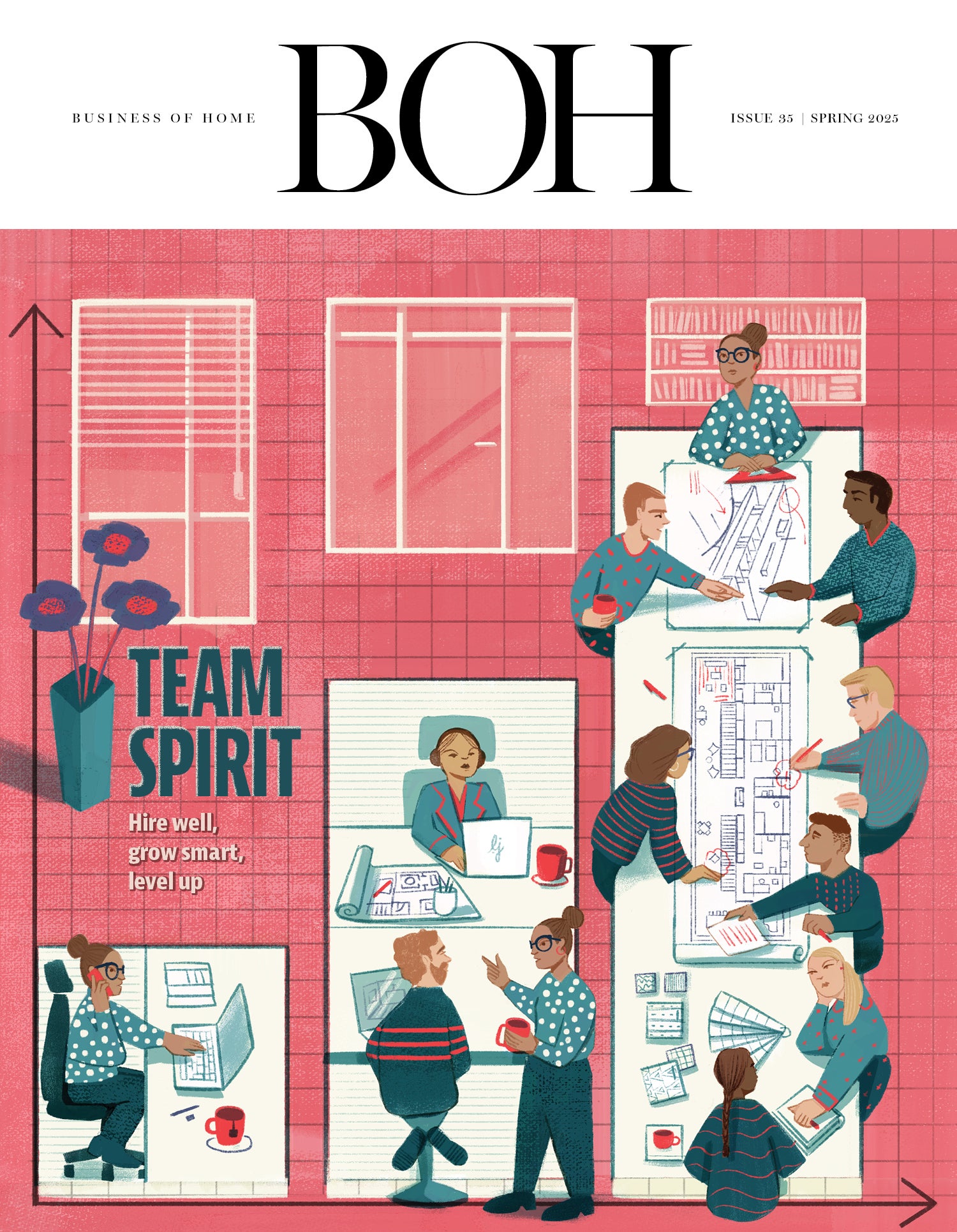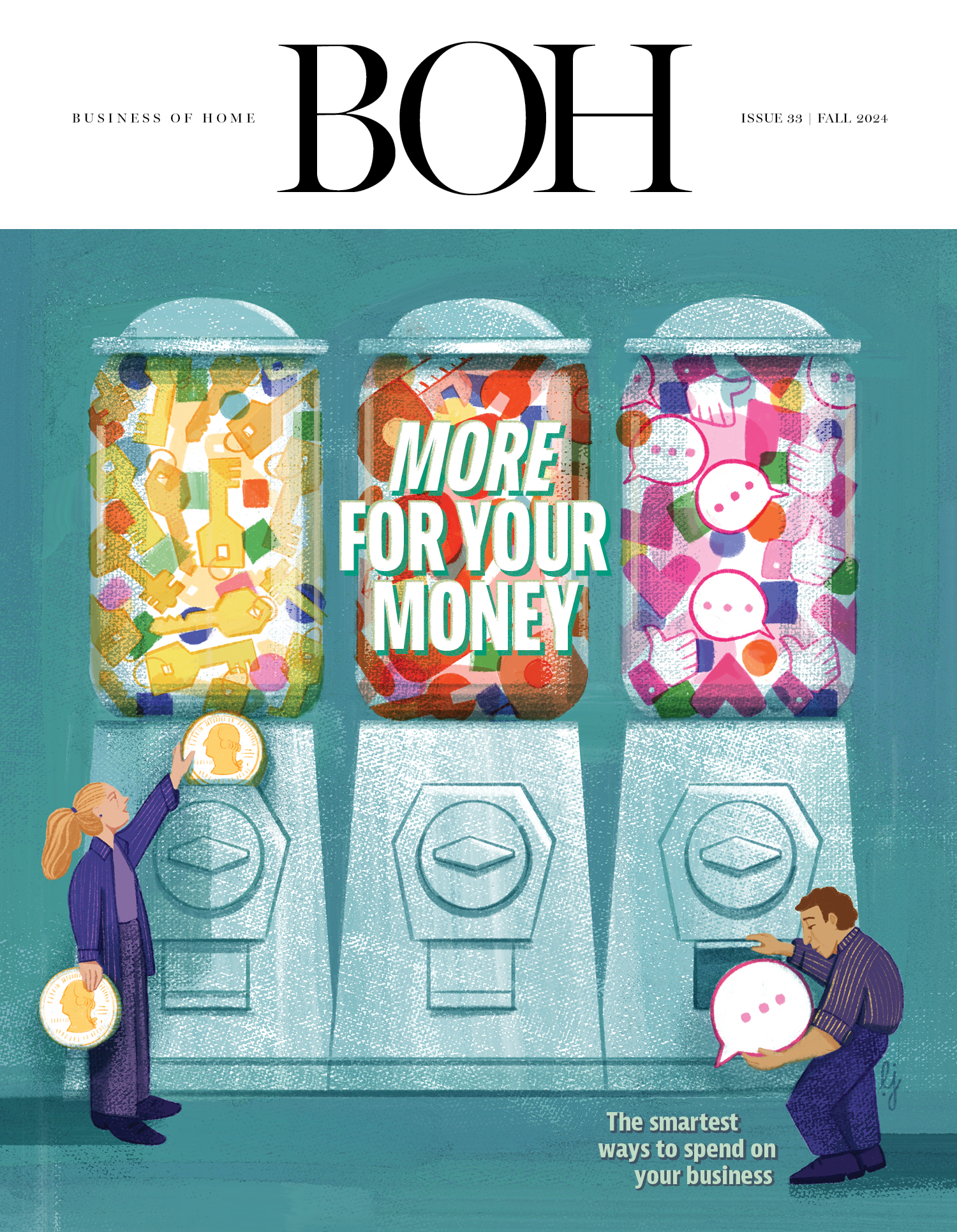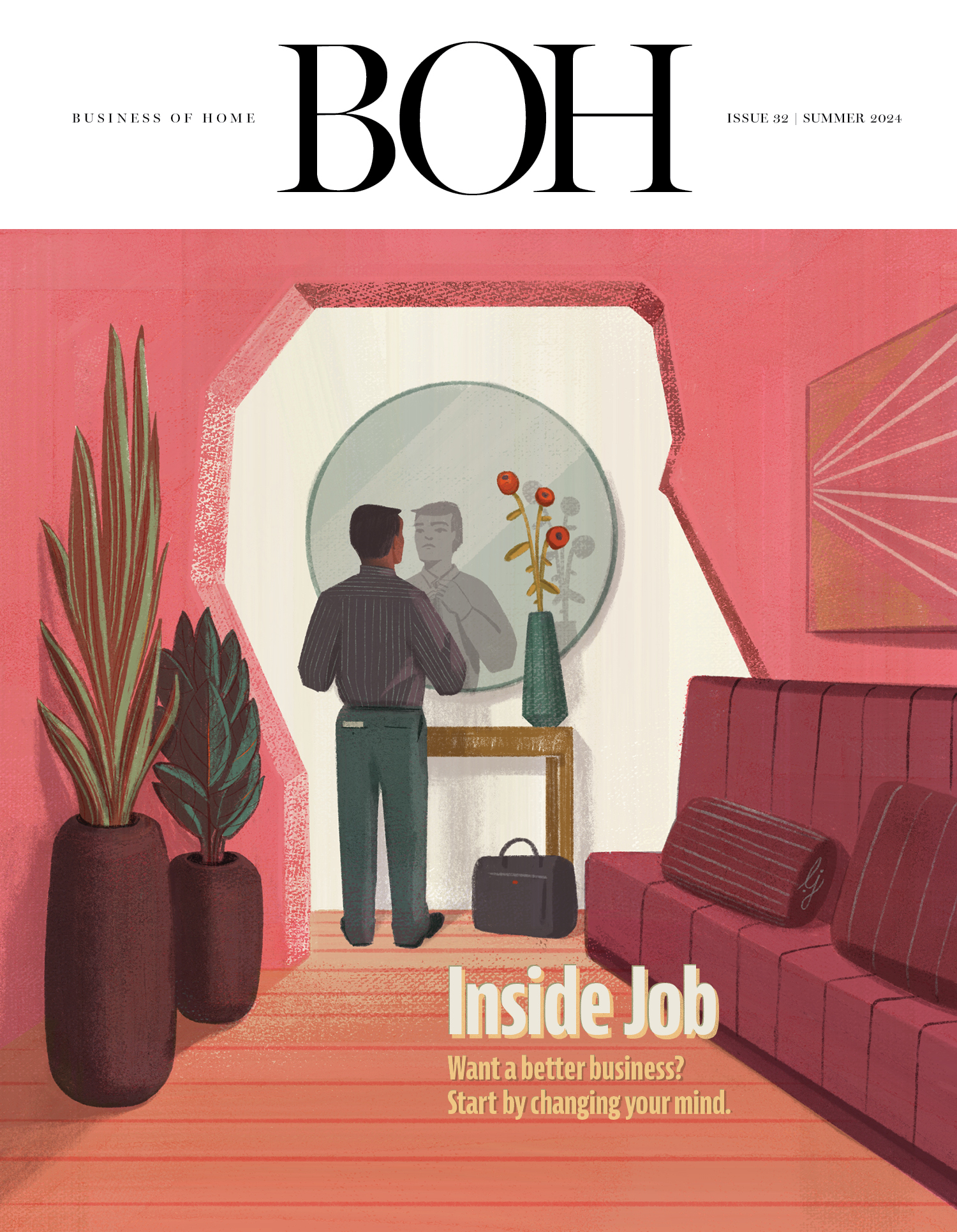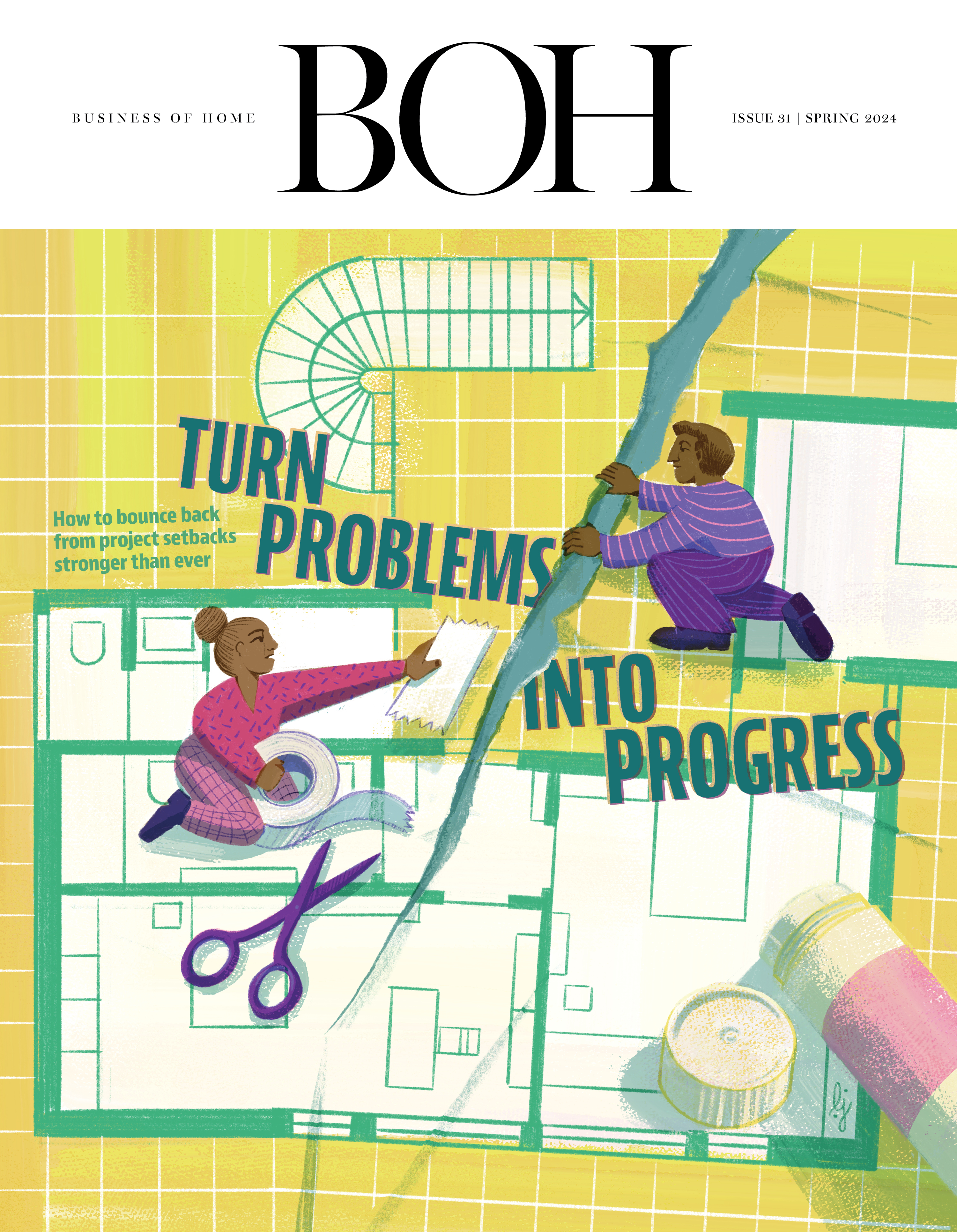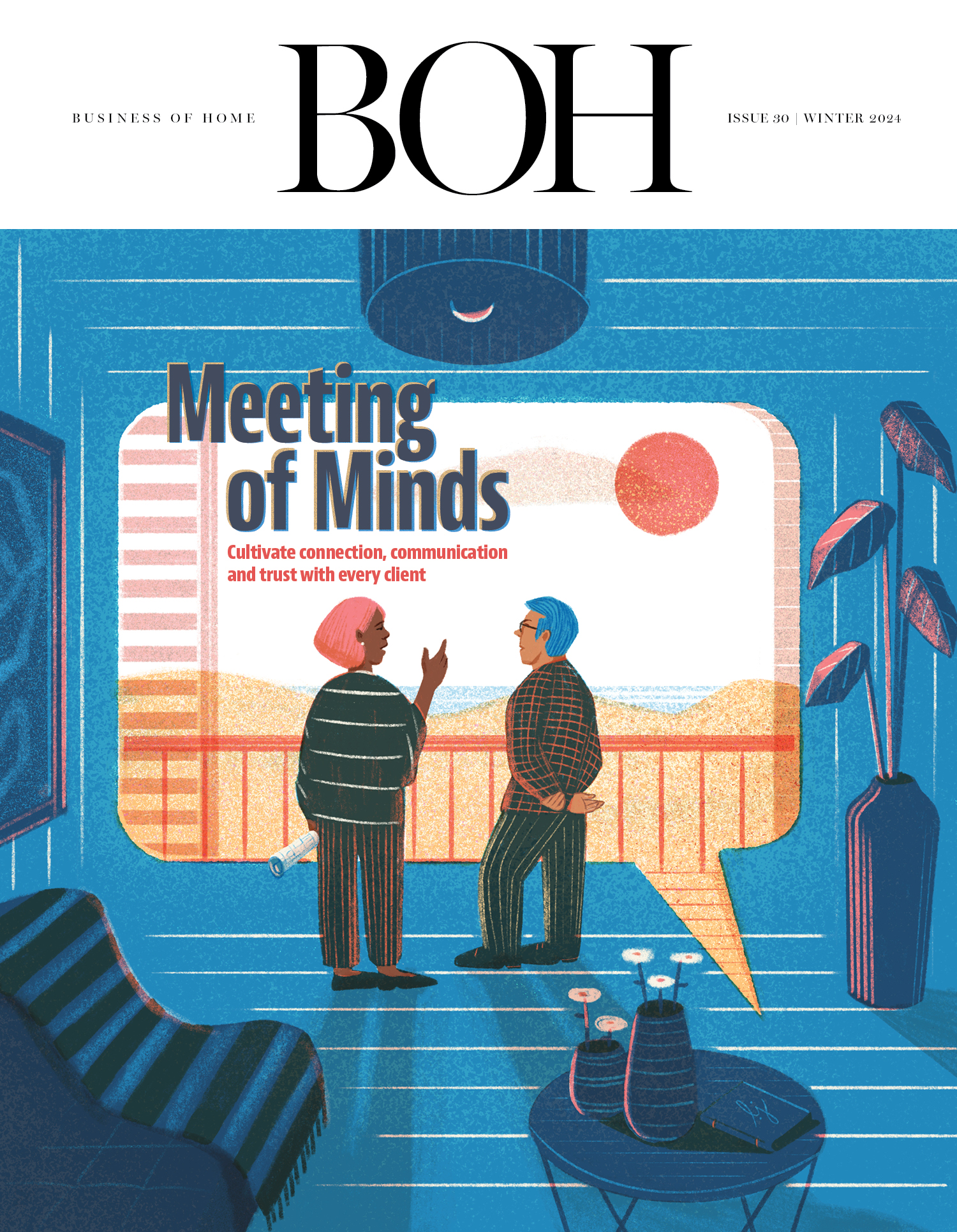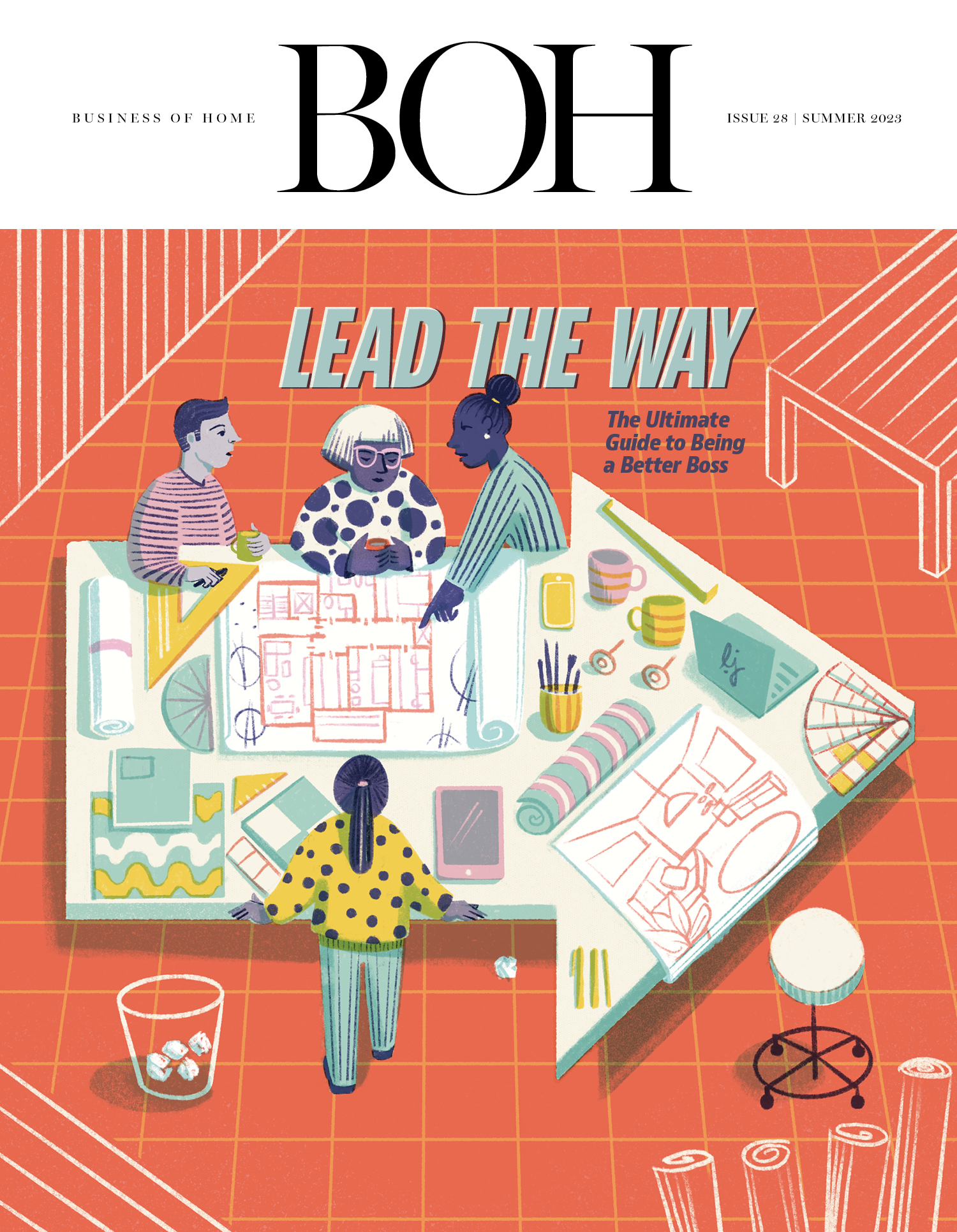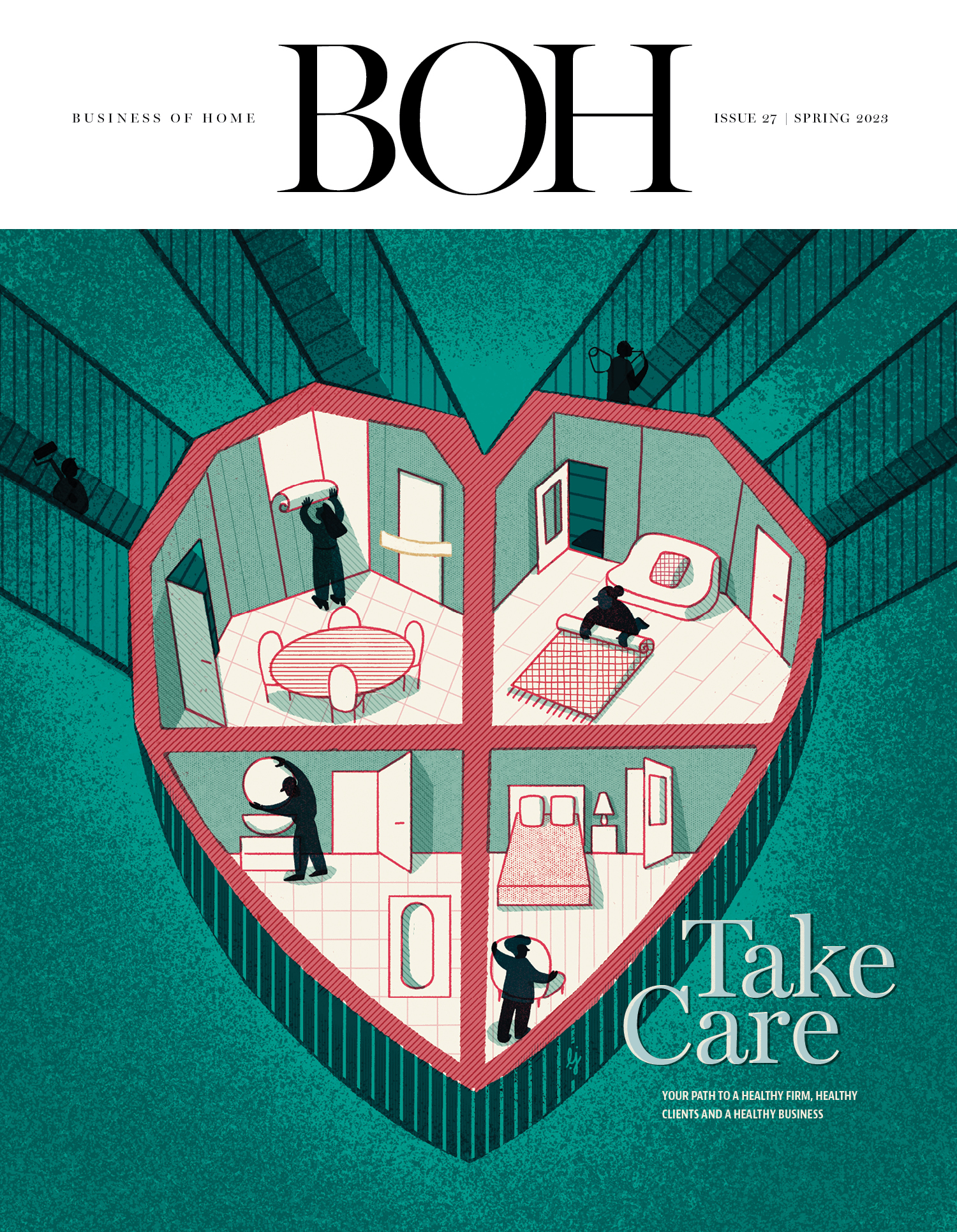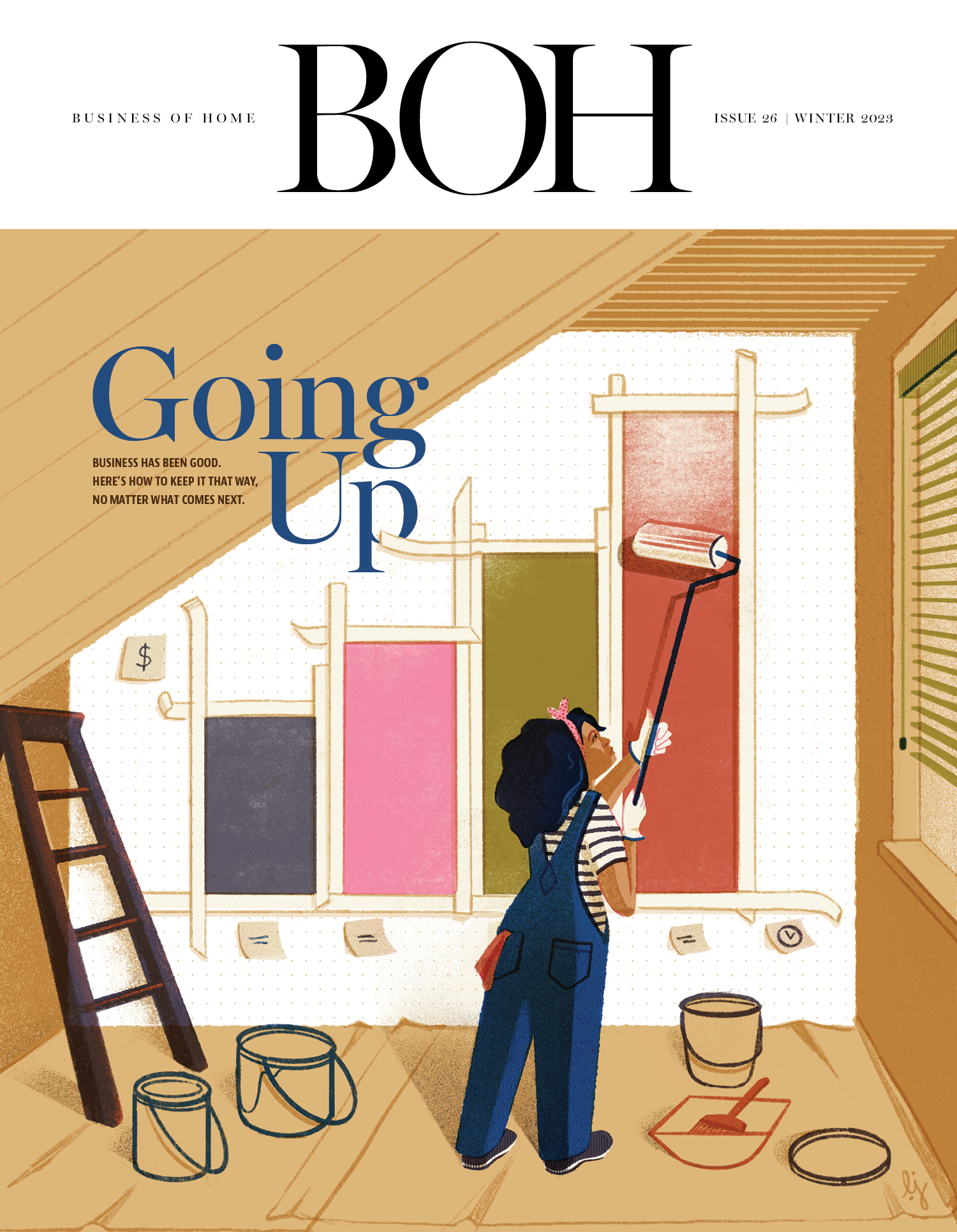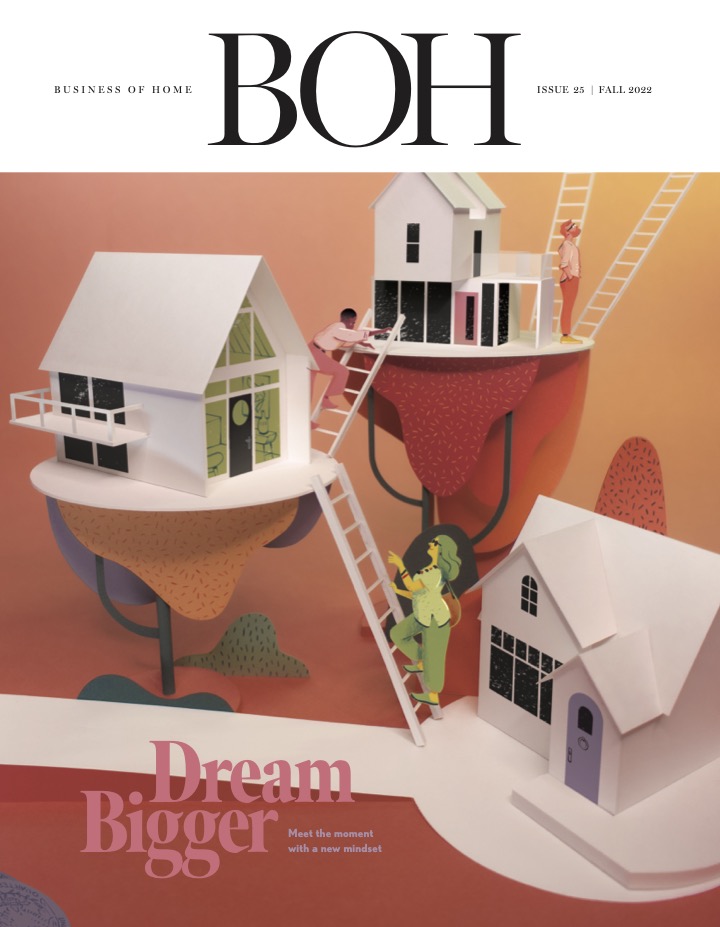In Business of Home’s series Shop Talk, we chat with owners of home furnishings stores across the country to hear about their hard-won lessons and challenges, big and small. This week, we spoke with Amanda McClements of Washington, D.C.’s Salt & Sundry.
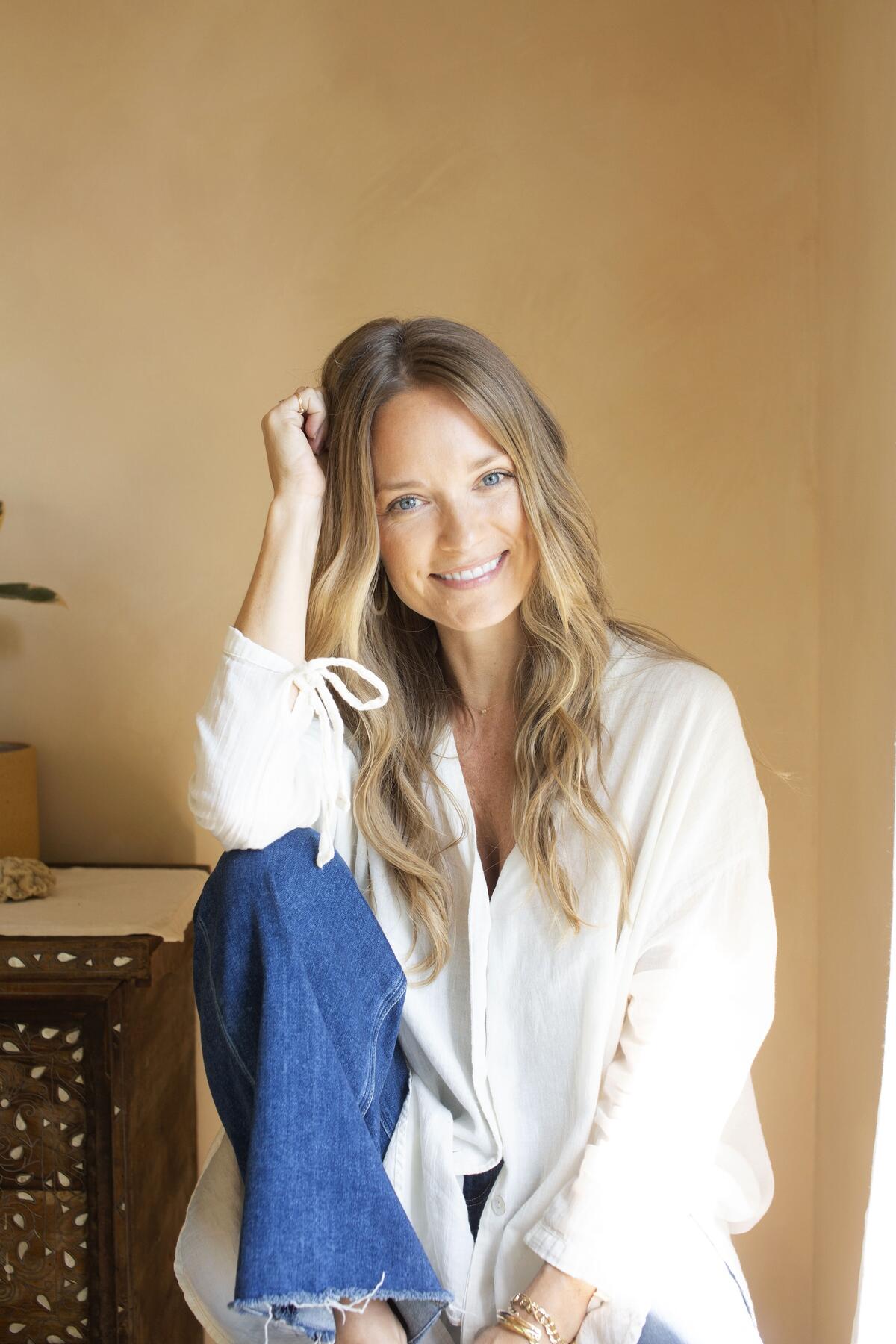
At the time of our chat, President Trump had recently deployed the National Guard to the nation’s capital, and McClements described the surreal sense of doing business in such a moment: “You see these memes on Instagram, like, ‘Hi, the world is burning. Buy my candles?’ You start to question what you’re doing, and how you’re contributing to your community.” Ironically, she first got into retail to escape politics, after a stint as a journalist. Ahead, she shares more about her journey, which has included three shops, a change-up in aesthetic vibe, and the cultural waves of four presidential administrations since opening in 2012.
What was your career like before opening the shop?
I was a journalist here in D.C. for about 15 years. I had been very passionate about journalism since I joined my high school paper, and then I moved to D.C. after college and worked at some political publications. When I realized that I wasn’t feeling super passionate about covering that world, I started freelancing—mainly about food, entertaining and the [local] restaurant scene. In a winding way, that led me to opening the first shop.
What was the bridge between these things?
Really, I was a frustrated shopper. I was writing about food and entertaining, trying to inspire people to open up their homes and host, and it was like, “OK, well, where do you go to buy the textiles for your table, or the cocktail glasses?” That started to percolate in my mind.
We’ve always been a bit underserved when it comes to retail in D.C. It’s a very savvy, very international place, but there are a lot of reasons—whether it’s real estate, or the way the city is laid out—that independent retail has not been able to thrive. But there was a food market opening in the northeast quadrant of the city, bringing together a bunch of great local purveyors, and I knew some of the chefs involved. At some point, I said out loud that I had an idea for a shop, and [the chefs] were like, “Oh, we really need a home goods store!” [The building management was] offering more flexibility than your standard commercial lease. So I opened the first shop in 2012 in this collaborative environment, where we could help each other figure out the ropes of the business without going it alone in some very expensive, very intimidating legal or financial agreement.
How would you describe the look of the store, and has that changed since opening?
I grew up in North Carolina as a sort of Southern bohemian. My parents were creatives. We were around a lot of hippie folks growing up. So in the beginning, I was doing more vintage sourcing, which is a ton of work. The style has changed a lot, as I’ve evolved my own taste—a bit more colorful, and more polished. I still love bringing in a great antique piece every now and then, but we’ve really learned what customers respond to, and what our role in the landscape is here. It is very gift- and accessory-focused. Our customers are looking for a great throw pillow or candle, versus a large piece of furniture to invest in.
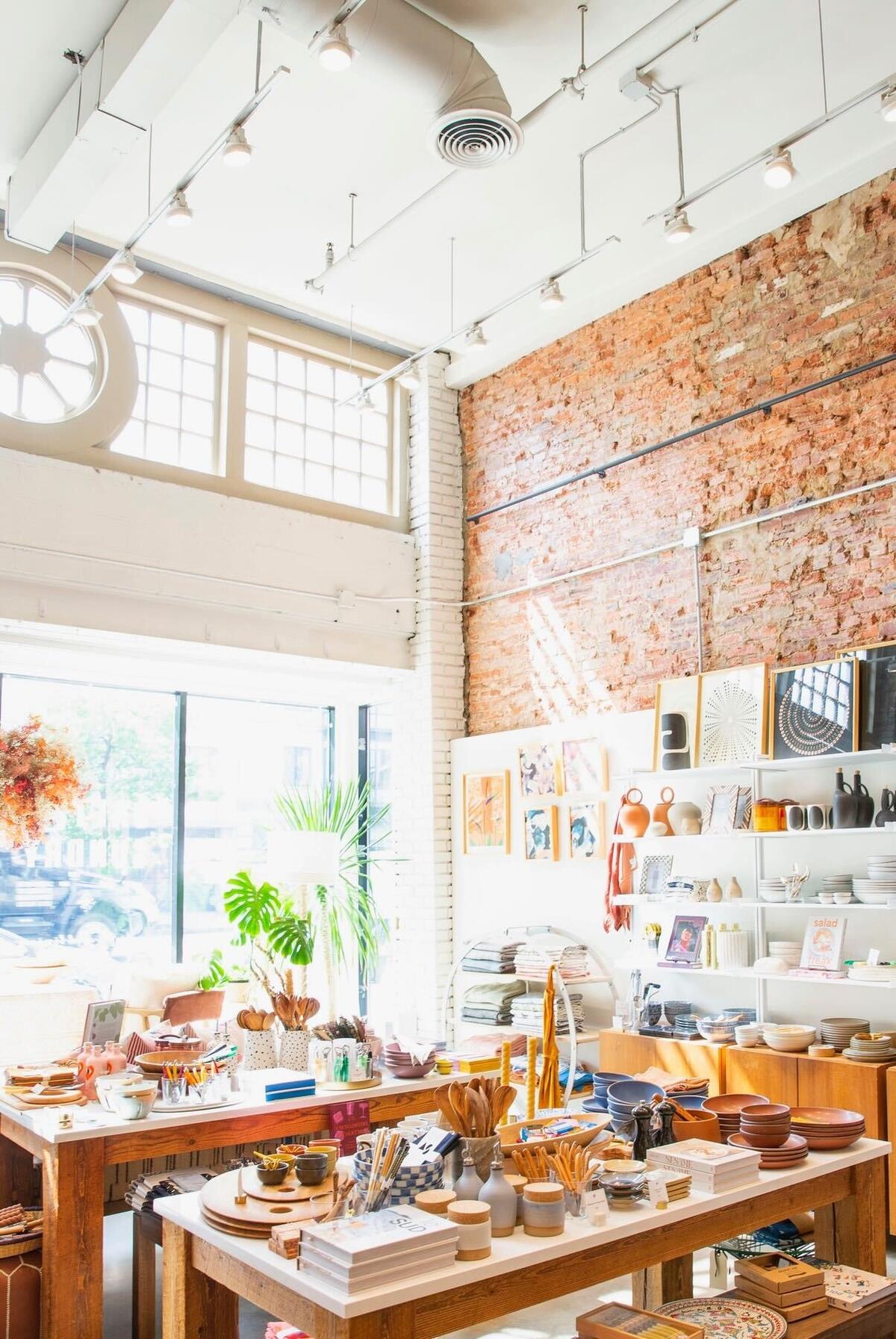
What’s your sourcing process like?
Sourcing is one of my favorite parts of running a business like this. If you’re naturally a shopper, it doesn’t feel like work. I go to trade shows. Instagram is obviously an endless source of inspiration. We get vendor solicitations through our DMs on a weekly basis. And then there’s travel; if I’m in Europe or somewhere, I’m looking at shops and restaurants like, What kind of napkin do they have? What’s the pottery on the table? I’m constantly turning plates over at a restaurant. Faire has made this buying world so much more efficient. It’s been such a valuable platform for us.
Tell me about a favorite vendor.
It’s like picking a favorite child. Right now I’m drinking my cappuccino out of a beautiful piece of pottery from Settle Ceramics down in Austin, Texas. We have a lot of small potters and ceramicists. I am obsessed with ceramics, and with textiles, which are a little bit harder to find locally made, or U.S. made. But the pottery that Samantha from Settle Ceramics makes is stunning.
What’s an item you can barely keep in stock?
Candles have always been our number-one seller. It’s fascinating to watch when a regular comes in and we’ve run out of their favorite scent—like, “How could you possibly not have the bergamot and black tea candle?” One of our top vendors since the day we opened is a local candlemaker based in Virginia called Sydney Hale Co. They’re a great company. Their product is beautiful, their scents are wonderful, they have some great philanthropic initiatives with animal rescue and animal welfare. We’re in year 13, and without fail, year after year, two of their scents are our top sellers.
What are your two locations like, and the typical customers?
Our original location is in the Union Market district. We just moved last year, from inside the food market to a much larger location a block down the street. [We get a lot of] neighborhood foot traffic and tourists. Our second location is a block from my house, in Logan Circle. Similarly, it’s a main retail corridor where people go to eat out and shop around. Even if I weren’t a business owner, those would be the two neighborhoods I would send folks to walk around if they were coming to visit D.C.
Why and how did you expand to the second location when you did?
When I first hatched the idea for the shop, I really wanted it to be in Logan Circle. I’ve lived here close to 25 years. That opportunity came up across town, and it was very appealing. So the Union Market location opened in 2012, and the second came in 2014. It was a natural extension of the original idea. So much of expansion for us has been the right space, with the right feeling, at the right price. The price piece is extremely important when you’re running a small business. That’s [also] guided the times we’ve done pop-ups or other shops.
Yes, will you tell me about Little Leaf, the sister shop you had?
When we opened the second Salt & Sundry in 2014, it was a very small space, barely 700 square feet. I would go to a garden center on the weekend and put some beautiful plant in a nice terra cotta pot and plop it in the front of the store for decor, and someone would say, “Can I buy that?” [I’d say], “Here, I’ll write down the name of the garden center.” And they’d say, “I don’t want to go to the garden center. I want that.” We heard a demand. City dwellers don’t necessarily have cars. A city plant shop made a lot of sense. There was an explosion of these small plant shops in New York and D.C. at the time. That’s where Little Leaf came from, and it was a wonderful shop for about seven years.
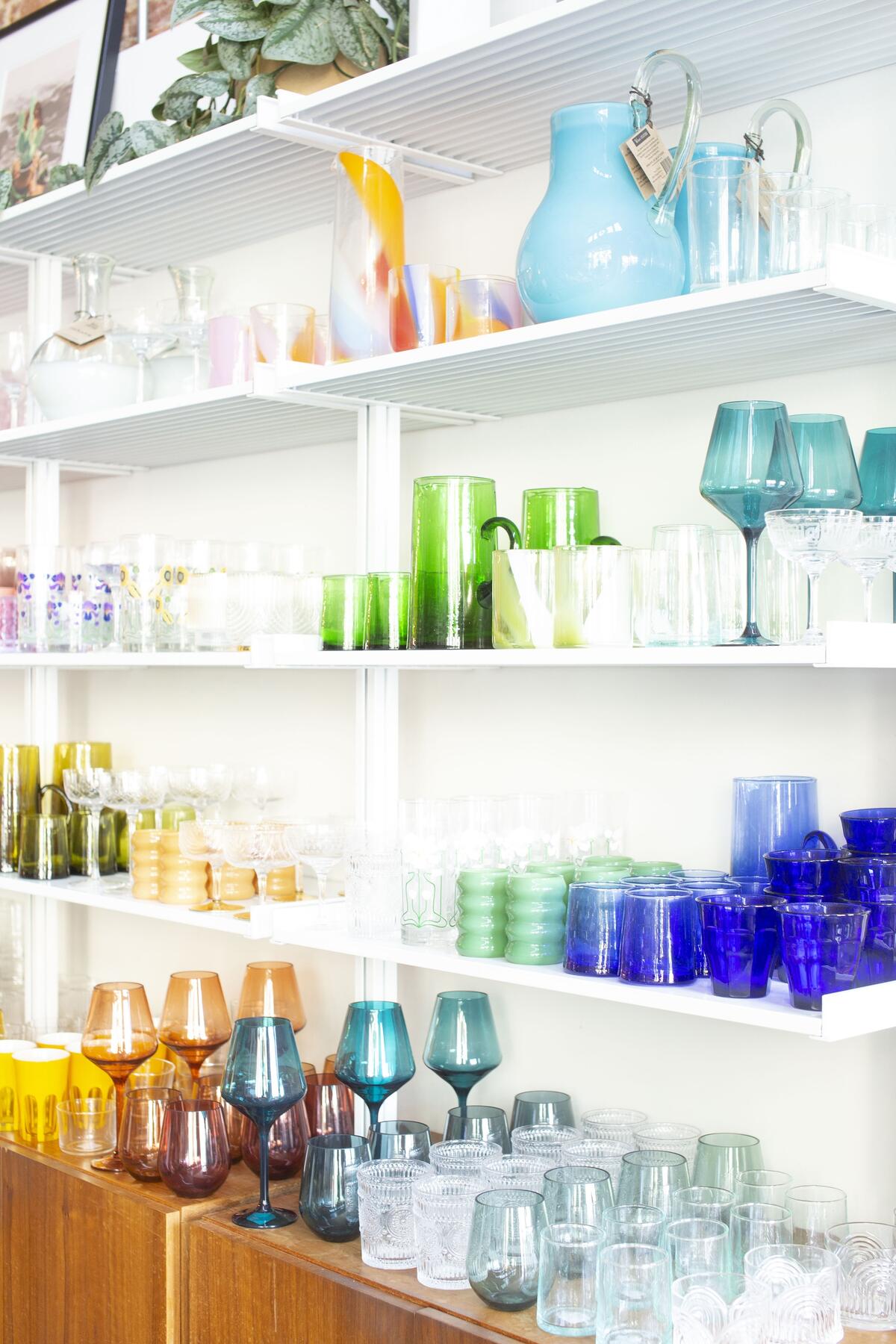
Why did you decide to close?
When Covid hit, we had three brick-and-mortar locations and a very large warehouse. Having to manage these leases and relationships really put me back on my heels. I think I was craving a little bit of simplicity. Our bandwidth is limited. When you have an entrepreneurial mind, it’s easy to say, “Let’s create this entirely new brand! I love this idea! I have a vision.” But at the end of the day, focusing on a core business became very appealing to me. Also, our sales really did not rebound after Covid. During the pandemic, we had a line down the block as people were nesting and trying to make their homes comfortable. That really sustained the plant business. But once we were back open, we saw Salt & Sundry’s numbers creep back up, and we did not see that with the plant shop. It was a really tough decision, but the business didn’t rebound.
Tell me about your e-commerce strategy.
We have a very robust website, but it is not a huge part of our business. Meeting customers where they are is what we try to do. Our core e-commerce customer [actually] is someone who lives three miles from the shop, but they’re used to shopping online. That’s where they want to make their purchase, and we’re happy to provide that for them.
In our team meetings every year, it’s like, “OK, this is the year that we really commit to this area, for growth!” Again, it comes down to the bandwidth. And I love a brick-and-mortar business. I love the experience of going in and smelling and touching, and chatting with people, and I was betting on the fact that other people felt that way—that the businesses in your community aren’t just for selling goods; they’re gathering places. E-commerce is an accessory to that.
How have you approached staffing, especially across two locations?
A lot of our weekend part-timers are just fans of the brand. They might be working a very high-profile nine-to-five job, and then they want to come be in this environment on the weekends and do something fun and creative. It’s an honor when those types of lovely humans come to us. My two senior-most directors have been with me 13 years and 12 years. We’re a woman-run, women-centered business. We take care of each other, we support each other. I pay people as well as I can, and that really helps us retain a strong team. Over the years, I’ve been motivated to grow the business so that I can keep people and create opportunities.
Tell me about your events.
Our new Union Market space is more than twice the size of our old space, and that’s been a lot of fun to play with. Events are often vendor-focused, like the wonderful folks from The New Savant in New York, who have a great candle line and came down recently to celebrate the launch of one of their new scents. This Monday, we had a poetry workshop. They sat in our living room area and made themselves comfortable. I love that we have the space to offer that. And that often is the motivation! Whether you’re actually going to make money doing it is not what it’s about. It’s about creating this gathering place for folks to connect and enjoy themselves.
So, how is it going in D.C. right now? Do you feel a change in customers with new administrations or political events?
I’ve lived in D.C. since 2001. One thing I’ve learned, especially in the creative industry here, is that this community has nothing to do with the federal government. Most of the federal government workforce are career civil servants, not political appointees. So that influence is pretty small; you don’t feel that in your local wine bar or the pizza shop.
That said, so much of business and retail hospitality is how you are showing up for your community. That brings me to the past couple weeks. I think one of the hardest parts for [locals] who live in these beautiful neighborhoods in D.C. is to hear people portray the city as a war zone, or this dirty, crime-ridden place. Anyone who lives in a city where there have been politically motivated, disparaging remarks gets that. But there could be a real impact on tourism. A family out in another state might be hearing this rhetoric and think, “Wow, I was thinking about bringing my family there for a spring vacation, but it sounds like it’s really dangerous.” That’s just not true.
We’ve had the National Guard walking back and forth in front of our stores for two or three weeks now. It is a high-tension time. We’d created a mission statement a long time ago: to promote well-being by empowering people to create thoughtful spaces that nurture and comfort them. Covid was one of the first times that our mission was affirmed—we were giving people the tools to do that. And we find ourselves back in another situation like that, where we're looking to do what we do best—to help people feel better by creating a place that’s safe, supportive and inspiring.
What are your hopes for the future of the business?
I didn’t get into this with a big endgame in mind, like “Grow the business to [a certain] size and sell it.” One of my main goals is always sustainability [from multiple perspectives]: Can this business continue to survive? How can we support other businesses whose mission values align with ours? How do I create a business that can stand the test of time?
I see a lot of different avenues of where it could go, and I’m very open. I have always wanted to create products, but I’m so distracted by all of the beauty other people create. Why would I go to the drawing board when another wonderful maker just sent me their beautiful textiles line? But that is definitely a goal for me personally—to finally carve out time to start playing around with product design.
What’s your favorite day as a shop owner?
Once a month, my directors and I have an in-person meeting. My favorite day starts with that meeting, heading into the shop, hearing the stories of a customer interaction the day before, or looking at a corner of the shop and saying, “Hey, what do you guys think we could do here to make this a little fresher?” That energy coming together is my favorite. It’s lightning in a bottle.



